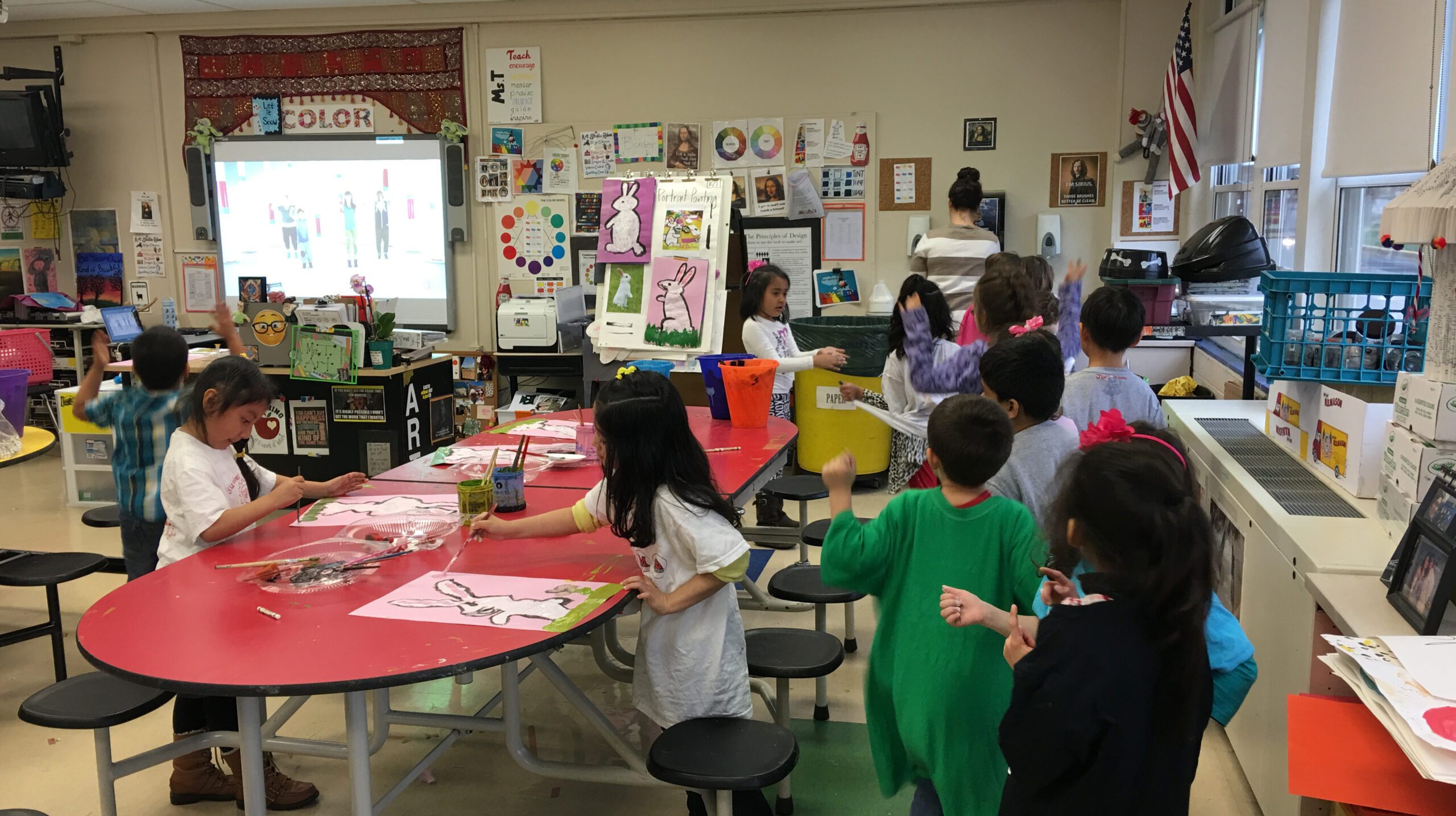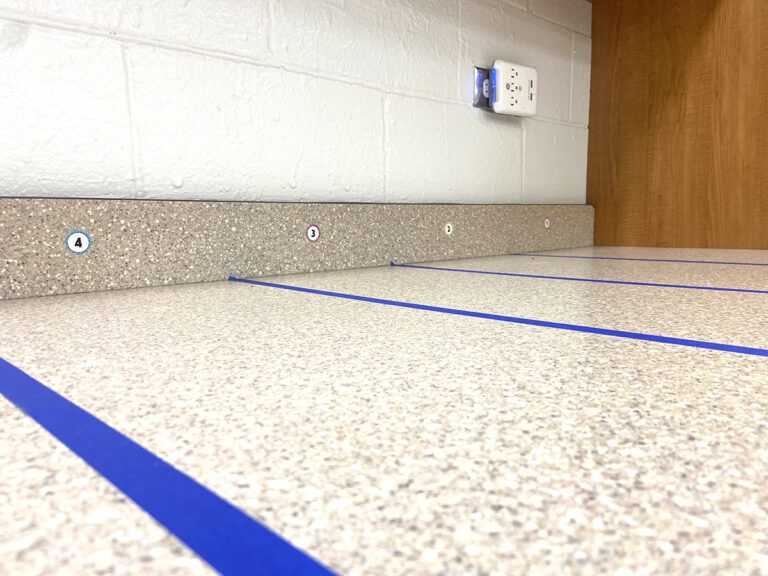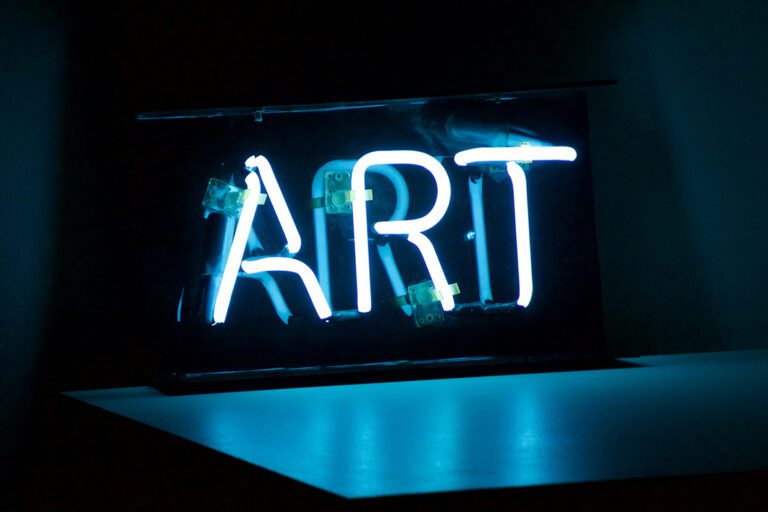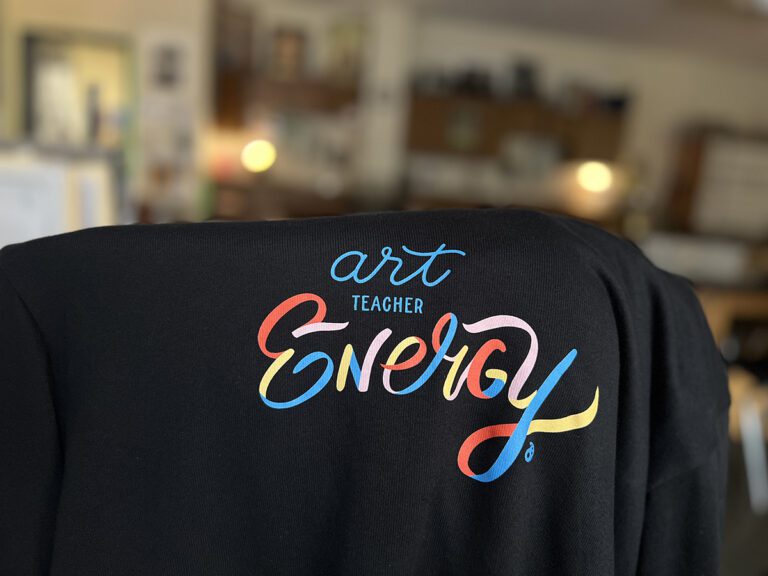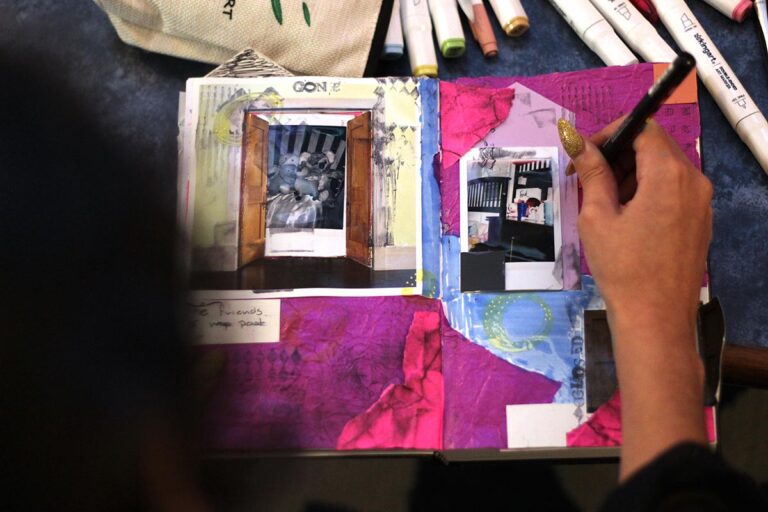Are your students constantly wiggling in their chairs? Stomping their feet? Banging and tapping tabletops, hanging off stools, unable to wait in line?
Little learners have so much energy and so few ways to expend it in a traditional classroom setting. It’s no wonder we see our students exhibiting these behaviors. Our challenge is to harness that energy and redirect it.
Surprisingly, you can limit distraction and disruption by encouraging MORE movement in the art room.
The key is to build in classroom-appropriate movement throughout the art period. Here’s how.
First, think about how to incorporate movement into the most mundane, daily tasks.
One way to do this is to use a familiar song and adjust the lyrics for your purposes. For example, when using Elmer’s glue, I teach students to sing, “Shake, shake, shake. Shake, shake, shake. Shake your glue bottle!” to the tune of KC and the Sunshine Band’s “Shake Your Bootie” song. They are happy to oblige. They boogie, giggle, and get the glue ready independently.
Vigorously shaking the glue bottles gets their bodies moving and allows time for the glue to travel to the nozzle. It’s a sure way to keep students from complaining that the glue “doesn’t work.”
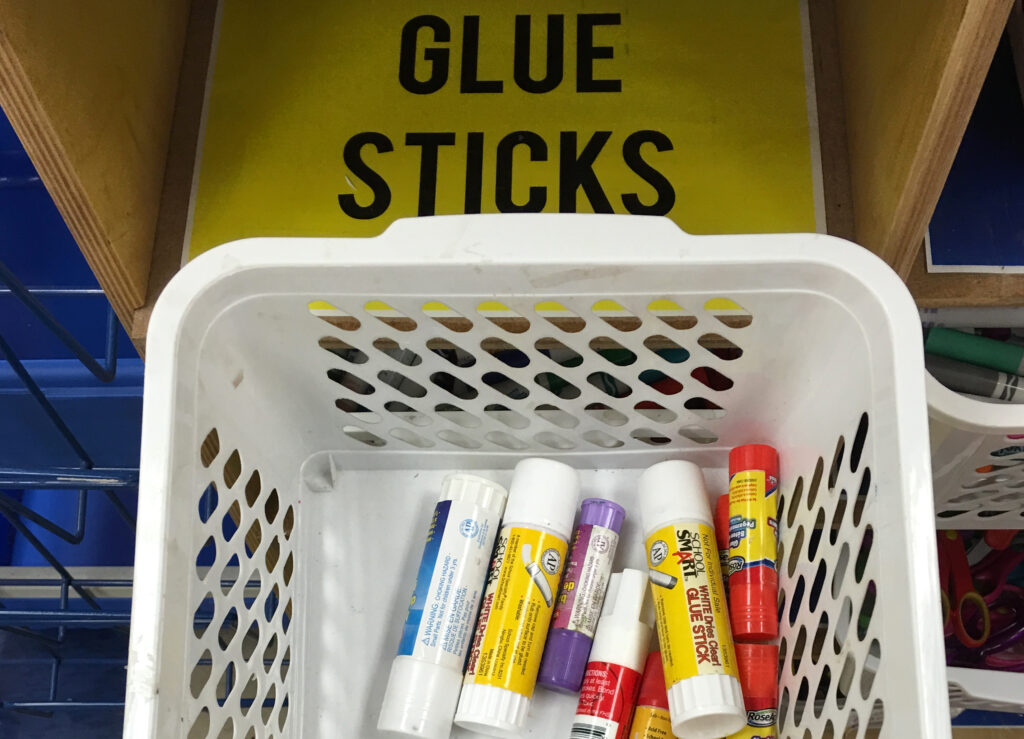
Or, why not Whip and Nae Nae to make sure your glue sticks stay fresh? On command, have students show off their tightly-capped glue sticks in their outstretched arms while doing the popular dance. Whenever possible, enlist the latest dance move and/or hot chorus refrain and it shall be received with much fanfare and compliance.
Second, think about how to incorporate movement into times where students would otherwise be standing still.
Having only a single sink and forty kindergartners that need to wash hands is less than optimal… but it’s my reality none-the-less. So, I needed a plan. First, I marked a line to the sink with duct tape. Second, I taught them how to do the Hokey Pokey. Their challenge is to straddle the tape while following the dance prompts. Since they need a bit of space to dance, it keeps them from pushing the person in front of them and gives them something to do while they wait for their turn.
You could think about building specific movement into other waiting times like while you pass out supplies or while students wait at the door for their classroom teacher.
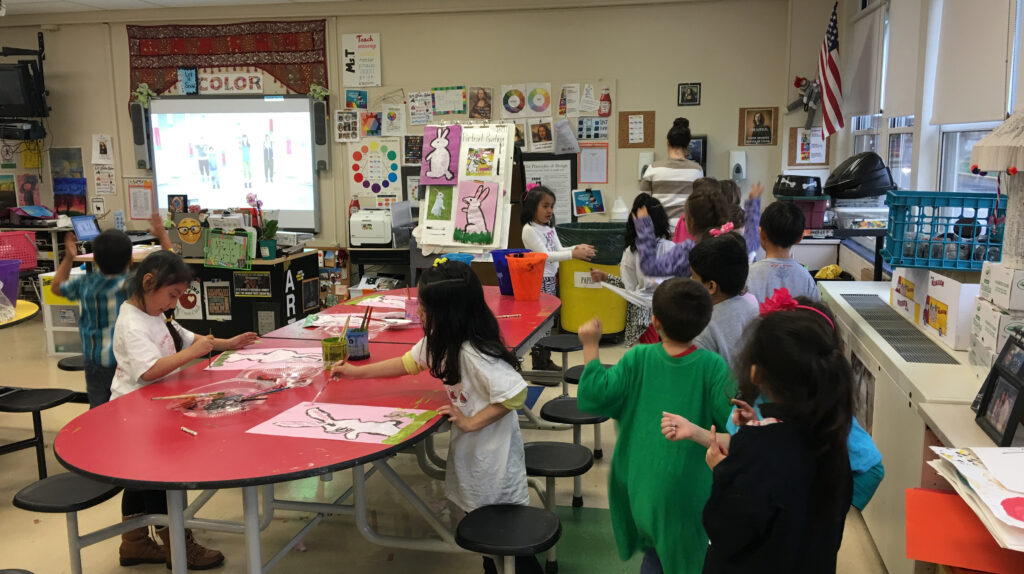
Third, have some backup resources you can use when you can tell students are getting antsy.
Sometimes, it’s clear that students just NEED to move. For these times, I like to have a few quick things I can pull out. Here are two great choices.
- GoNoodle.com
This is a great, free website that has everything from yoga and meditation to dance routines that are pre-loaded with visuals and grouped by grade level and duration. - Dance Dance Revolution
This is a fun game that is available for a variety of gaming systems. However, you can also just project the game and have students follow along at their table spots.
Both of these can be streamed to a Smart Board or any other projection device connected to your computer. Changing it up is key, and, thankfully, these resources abound and you can constantly add to your repertoire. It can be helpful to create a YouTube playlist for yourself to easily access and bookmark these sites on your school computer. Being organized and having this set up ahead of time is crucial. You don’t want to be fumbling for a video while your class needs attention.
Fourth, incorporate movement into your daily teaching practices.
For example, when teaching new vocabulary, have students stand, clap it out, and rhythmically repeat the words and definitions while stomping around the table. It’s a proven fact when you make something lyrical or rhythmic, retention is heightened. Plus, they get a chance to release pent-up energy.
Here’s another idea. When introducing the concept of foreground, middle ground, and background, why not have your students act it out? Here’s how to do it:
- Assign each student a role.
- Have the “foreground” students sit, the “middle ground” students crouch behind them and the “background students” stand tall at the very back.
- Show the class a visual that has a clear foreground, middle ground, and background.
- Ask students to personify what is depicted in the example. Maybe the foreground students become a waving field of wheat, the middle ground students become trees, and the background students become a distant and tumultuous sky.
- Have students switch roles so they get a feel for all the parts.
This simple activity helps students internalize the distinctions and works out the wiggles at the same time.
Finally, consider offering a standing only work area if space allows.
Sometimes, students just work better standing up. You can let them stand right at their seats, or, you can get creative and create an easel workspace or other designated standing space if you have room. Creating a separate space gives students the freedom of movement they prefer and relegates distracting movement to a contained area.
As you begin to incorporate and encourage more kinesthetic activities into your art room, you will experience fewer behavior problems stemming from inactivity. Plus, you up the cool quotient of the art room. As if we needed that… right?
How do you keep little learners active and engaged?
What online resources do you employ to keep your artists moving? Please share!
Magazine articles and podcasts are opinions of professional education contributors and do not necessarily represent the position of the Art of Education University (AOEU) or its academic offerings. Contributors use terms in the way they are most often talked about in the scope of their educational experiences.
